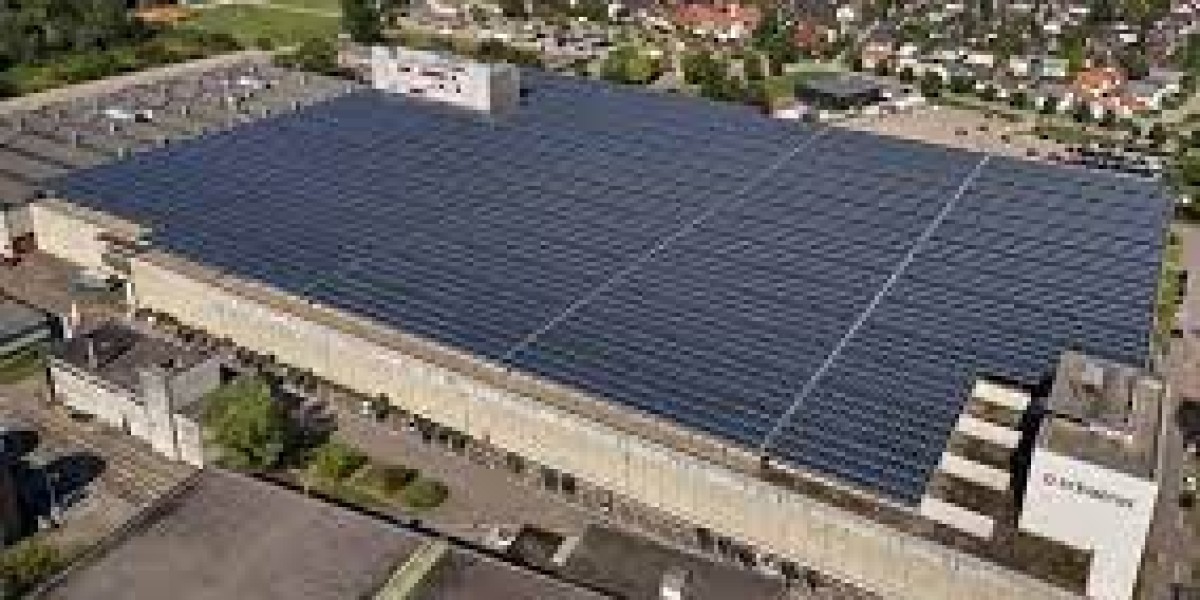There are places you wouldn't expect
Located on the equator, Singapore is now one of the most solar-intensive cities in the world.
Singapore has increased local solar capacity 100-fold over the past decade, from about 60 megawatt-peak to more than 630 megawatt-peak (MWp).
It is expected that by 2030, it will further increase to at least 2 gigawatts, which is equivalent to the power supply of about 350,000 households per year, and can meet 3% of local electricity consumption.
So, where are these large areas of small solar panels hidden?
HDB roof
The most common sight of ant powder should be the solar panels on the roofs of HDB flats.
HDB set a target in 2019 to increase the installed solar panel capacity of HDB estates to 540 megawatts by 2030 at the latest, which is capable of generating 648 gigawatt hours (GWh) of clean energy annually, equivalent to powering 135,000 four-room HDB flats.
Under the SolarNova project, the energy collected by the solar panels can be used to power facilities such as HDB lifts, water pumps and lighting in public Spaces, and the excess energy can be sent back to the grid, bringing the average net energy consumption of HDB public areas to zero.
HDB has so far committed to provide 380 megawatts of solar capacity for 8,400 HDB flats, of which 2,700 have been installed.
Reservoir surface
Solar photovoltaic panels can also be installed on the water.
The 45-hectare Sembcorp Tengeh Floating Solar Farm in Tenge Reservoir is one of the largest inland floating solar PV systems in the world.
The new plant, built by Sembcorp Industries' wholly owned subsidiary Sembcorp Solar Singapore and PUB, will produce up to 60 megawatts of electricity, enough to power five local water treatment plants and reduce carbon emissions by 32 kilotons (equivalent to 7,000 cars) per year.
Cash machine "roof"
The small ATM "roof" can also "call" oh.
On March 26 this year, in conjunction with Earth Hour, DBS Bank (DBS) and Savings Bank (POSB) launched the first solar-powered cash machine.
The cash machine is located next to Block 528 of Ang Mo Kio Road 10 and has been in service since the 1990s.
According to DBS, 30 per cent of the machine's annual electricity consumption will be powered by solar panels installed on the roof. The public can see the solar power generated in real time through the ATM dashboard.
Bus roof
In March last year, bus operator Go Ahead Singapore installed two ultra-thin solar panels on each roof of two diesel-powered buses to carry passengers on public roads for a trial period of six months.
Go Ahead is working with the Land Transport Authority to evaluate the results of the trial to explore the use of solar energy to improve bus efficiency and reduce diesel consumption, and whether to install such solar panels on other buses.
Each solar panel can produce up to 500 watts of energy.
The company has already conducted the same test in Southhampton, UK, which has resulted in an average savings of about 1,400 litres of diesel per bus per year, equivalent to a savings of about 3 to 4 per cent, and a reduction of about 3.7 tonnes of CO2 emissions.
Given Singapore's tropical climate, it is believed that the solar-powered bus will have better results in Singapore.
Vacant industrial land
In addition, Jurong Group also launched the Solar Roof and Solar Land program, which will be spread across the island, a total area of more than 560,000 square meters of 14,000 commercial building roofs and vacant industrial land to put to good use, the installation capacity of more than 67 megawatts of solar panels. The electricity it produces can be traded on the open energy market.
Unlike traditional fixed designs, these solar photovoltaic panels use photovoltaic panels that are easily installed and removed. Once the vacant land is requisitioned for development, the panels can be dismantled and shipped to other sites for reinstallation.
For example, Jurong Group has installed portable solar panels on a total area of 11.6 hectares of land and connecting road in Changi Business Park, which can generate 14.9 gigawatt hours of renewable energy per year, equivalent to the electricity consumption of 3,365 four-room HDB flats in a year.
Commercial building roof
Located in the center of the city, Ocean Finance Center, it has 450 square meters of solar panels on the roof, which can supply 3 to 5 percent of the entire building's electricity. This is one of the largest solar panels in the local office building.
Last month, real estate consultancy ERA opened its Asia Pacific headquarters in Toah Kiln Lane 6.
It was formerly known as Hersing Centre, formerly known as Toa Yao Entertainment Centre. In order to create a sustainable low-carbon environment, 278 solar panels are installed on the roof of the building to supply 30% of the building's electricity.
Oil station roof
To reduce its carbon footprint, Shell is the first energy company in Singapore to install solar photovoltaic panels at its service stations. The solar energy generated will be used to power gas stations and convenience stores, which can reduce CO2 emissions by about a third.
Thirty-seven of Shell's 57 service stations are equipped with solar panels.








